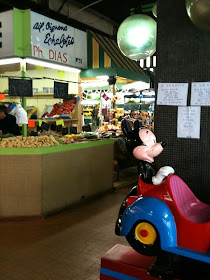 Like the rest of Paris, Saint Joseph des Nations took a beating in the snow storms last Wednesday, but it was nothing compared to the battering it took in August 1899. That day it was not adverse natural weather conditions that set upon the church but a group of enraged anarchists.
Like the rest of Paris, Saint Joseph des Nations took a beating in the snow storms last Wednesday, but it was nothing compared to the battering it took in August 1899. That day it was not adverse natural weather conditions that set upon the church but a group of enraged anarchists. The day was Sunday August 20th, and a popular newspaper, 'Le Journal du Peuple' had called for people to gather at the nearby Place du Chateau d'eau (today the Place de la République - and still the most important place for demonstrations in the city) to demand 'truth, well-being and social emancipation'. The Dreyfus affair was still on people's minds and emotions were running high.
The city police were prepared and prevented the crowds from gathering at the Place, but that just drove them in other directions - principally towards the Saint Joseph des Nations church on the Rue Saint Maur. The church as an institution was seen as being culpable in the Dreyfus affair, and therefore a legitimate target for the crowds who forced their way into this particular building.
 In the hours that followed battles raged and the church was attacked and looted. Over 200 protesters were arrested and 137 police officers injured.
In the hours that followed battles raged and the church was attacked and looted. Over 200 protesters were arrested and 137 police officers injured.
Théodore Ballu's building suffered the humiliation of being violated, but it was a clear sign of a society that was changing. Six years later, the French government voted to separate the church and the state and become a truly secular society. The role of the church in the running of the country was vastly reduced, turning it back towards more parochial and less controversial missions.
Saint Joseph des Nations wears its name well today, and is home to a wide range of international communities, offering services in both Portuguese and Tamil as well as in French. In the silence of the snow, few passers by would be able to imagine the building under siege from hundreds of angry protestors, and how curious it would seem anyway in a world where banks and stock exchanges have become more privileged targets.


















































